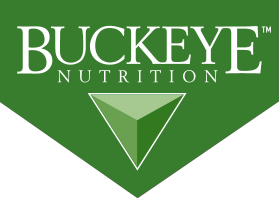How Effective Are Grazing Muzzles in Reducing Pasture Intake?
Limiting pasture intake is recommended for obese horses and ponies, especially those at risk for laminitis. This can be difficult to do if horses have access to pasture full-time or when, for example, stabling is not an option. Using grazing muzzles has been recommended but how much of an effect do grazing muzzles really have on reducing pasture intake in horses?
Objectives:
To determine the dry matter intake (DMI) in ponies wearing grazing muzzles during spring, summer and autumn seasons.
Ponies and Treatments:
- Four mature, healthy welsh cross ponies in light work were kept in stables and fed hay.
- Each pony had access to and individual paddock pasture for three hours grazing time over two consecutive days, one day muzzles and one day unmuzzled. This was repeated four times per season.
- All ponies wore collection harnesses allowing for feces and urine collection while at pasture.
- Researchers collected samples of each pasture paddock daily midway through the grazing period.
- Ponies were weighed before and after the grazing period to determine change in liveweight (LW) for calculation of pasture intake.
- Insensible water loss, defecation and urination were considered when calculating pasture intake.
Results:
- DMI reduced an average of 80% when muzzled.
- In autumn, all ponies consumed more than 1% of body weight as DM in the three-hour grazing period on at least one occasion.
Take Home Message:
Owners looking to reduce their horse or pony's weight may underestimate pasture intake even with restricted grazing times. Grazing muzzles, when fitted correctly and monitored carefully, can be an effective way to reduce pasture intake and a useful tool in weight management.
For more information, click here (opens in new window) .
References:
Longland, Annette & Barfoot, Clare & Harris, Patricia. (2015). Effects of Grazing Muzzles on Intakes of Dry Matter and Water-Soluble Carbohydrates by Ponies Grazing Spring, Summer, and Autumn Swards, as well as Autumn Swards of Different Heights. Journal of Equine Veterinary Science. 40. 10.1016/j.jevs.2015.09.009.
